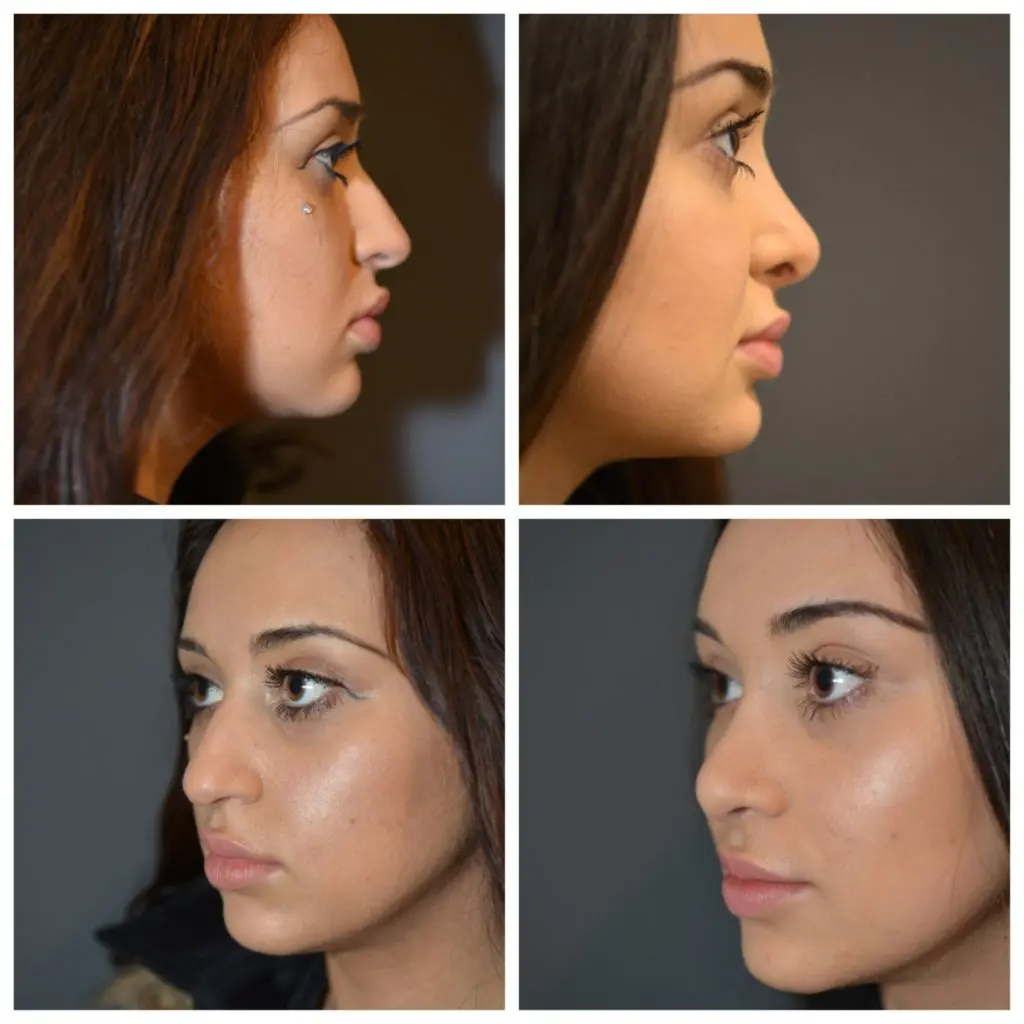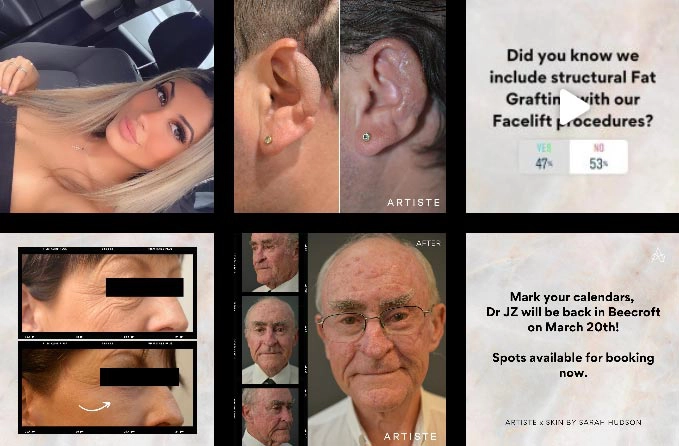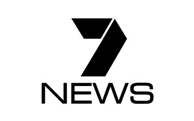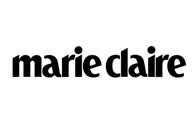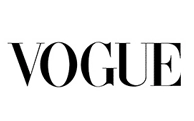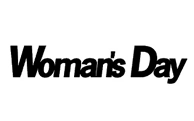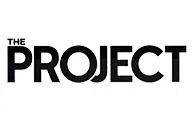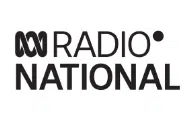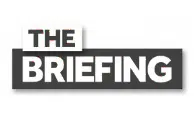What is Rhinoplasty Surgery?
Model featured in photography
Rhinoplasty
Rhinoplasty, in layman’s terms, is known as a nose job. It’s a procedure that can achieve many functional and cosmetic outcomes.
As a patient, it’s good to know the difference between rhinoplasty that’s carried out for cosmetic reasons and rhinoplasty that is done for medical reasons. Rhinoplasty surgery can effectively alter the appearance of the nose. It corrects disfigurements associated with congenital disabilities or trauma and leaves patients with a symmetrical and well-proportioned nose. If the procedure is carried out for medical reasons, it can arrest breathing and snoring problems and even correct issues like a collapsed nasal bridge or a ‘sideways-set’ nose.
Rhinoplasty and its Origins
The history of rhinoplasty dates right back to 600BC although much has changed in the field of cosmetic surgery since then. Rhinoplasty techniques used today are efficient and extremely effective, and they produce great results. Rhinoplasty is not about getting a nose that conforms to the contemporary ideals of beauty. It’s about getting a natural looking nose that blends in well with the other features on your face. The surgery allows you to bring your nose into balance with the rest of your face, and can help you look younger and more beautiful than before.
Rhinoplasty Procedure Steps
The surgeon will first sedate you and then make a few incisions on the nose before reshaping the bone and the cartilage. The techniques used to perform rhinoplasty differ from patient to patient, depending on the problems that need to be addressed. Some patients may require bone grafting if the nose requires additional bone. Others may need a cartilage graft for proper reshaping. Different types of nose surgeries are done on patients depending on what the patient wants to achieve. The surgeon works closely with each client, determining whether the procedure needs to be done for functional or cosmetics reasons or both.
Does Rhinoplasty Hurt?
Patients undergoing rhinoplasty are given sedatives together with anaesthesia. The level of anaesthesia that’s administered depends on the complexity of the procedure. If the procedure is carried out as an outpatient surgery, the patient is usually given local anaesthesia either with or without sedatives. General anaesthesia may be ideal for those who are extremely nervous about undergoing the procedure. It is also administered to patients who are undergoing complicated procedures that are expected to take a couple of hours. Since patients are sedated or numbed at the surgical site, they’re less likely to feel pain during the procedure. In the hands of a highly skilled surgeon, the operation is fairly straightforward, and it helps people transform their appearance.
Types of Nose Surgery
There are two types of rhinoplasty surgeries used to treat or correct various problems with the nose. Functional rhinoplasty surgeries can correct conditions like a deviated septum, enlarged turbinates, nasal polyps and nasal fractures. Cosmetic rhinoplasty corrects the radix, straightens a crooked nose, alters the projection of the nose, adjusts the nasolabial angle, reduces the width of the nose and reshapes the nose.
There are two techniques used to perform these procedures. They’re known as the open or the closed technique. An open procedure involves making incisions on the columella or the external area of the nose. The closed technique involves making surgical incisions inside the nostril. This technique is the preferred option because it prevents visible scarring. However, if the treatment area is located right up in the nasal cavity, the surgeon may have to use the open technique.
An Overview of Cosmetic Rhinoplasty Procedures
Radix Correction
The radix is the area that lies between the intersection of the forehead slope and the top of the nasal bridge. If the radix is too large or shallow, the surgeon can perform rhinoplasty to correct any bumps or depressions that are present. To reduce the radix, the surgeon will have to shave off excess cartilage that’s lying underneath it. If the patient’s radix requires augmentation, the surgeon will use the patient’s own cartilage, harvested from other areas of the nose, to increase the size of the radix.
Straightening a Crooked Nose
Rhinoplasty also effectively straightens a crooked nose. To perform the procedure, the surgeon will either remove tissues and cartilage or reposition the tissues to make the nose appear straight and symmetrical.
Tip Reduction and Rotation
Rhinoplasty can address concerns associated with the shape and position of the tip of the nose. If the tip looks like it’s too bulky, poorly defined, or turned upward or downward, the surgeon will work on the tissues at the tip of the nose and reshape the area to make it look attractive.
Changing the Projection of the Nose
If the nose is overprojected or underprojected it can look disproportionate and rob you of a naturally appealing face. To alter the projection of the nose, the surgeon will either trim some of the cartilage that’s located at the tip of the nose or use a cartilage graft to augment the tip of the nose, depending on the patient’s needs.
Alar Adjustment
Alar adjustment is right for patients who are conscious about wide or flared nostrils. By trimming some of the tissue around the outer edges of the nostril, the surgeon can create sharp contours and eliminate excessively flared nostrils.
Rhinoplasty can correct many issues, other than those listed above. The surgeon will carefully examine the patient’s nose and facial features before coming up with a suggested treatment plan that will drastically alter the patient’s appearance.
Rhinoplasty for Broken Nose
Functional rhinoplasty treats conditions associated with a nose fracture. Some of the most common types of nose fractures are greenstick fractures, comminuted fractures, and Le Fort fractures. Patients are also known to suffer from a saddle deformity as a result of a nose fracture. Broken nose surgery treats all these conditions. It arrests breathing problems, eliminates nasal deformities and restores the shape of the nose.
Where to get a Nose Job
You’ll come across many surgeons offering rhinoplasty procedures all over the country, however not all of them will have completed years of supervised surgical training in rhinoplasty. Look for a plastic surgeon who has completed advanced surgical training programs. Find out whether they’ve specialised in plastic and reconstructive procedures and do your research to see if they’ve obtained training from a plastic surgery fellowship.
Since rhinoplasty is a challenging cosmetic procedure that requires advanced surgical expertise, it’s important to find a good rhinoplasty surgeon who has refined skills and years of experience. The surgeon you choose should be able to fully explain the procedure to you including the pros and cons. The consultation shouldn’t feel rushed. It’s best to have two consultations with the surgeon before undergoing the procedure, so you have the chance to discuss your expectations and concerns at length.
What is Reconstructive Plastic Surgery?
Reconstructive plastic surgery is performed on patients who are suffering from body abnormalities caused by trauma, infection, congenital defects or diseases. These surgeries attempt to restore form or function of affected body parts. They can, for example, reconstruct the head or breast after cancer, or repair the nose after a fracture.
Is a Nose Job Worth It?
A nose job gives you a beautiful looking nose that enhances your looks. The idea itself sounds very exciting for those who are conscious about their appearance. It can straighten a crooked nose, eliminate bumps or depressions on the nose, alter the size of the nose and even fix problems associated with breathing, nasal polyps, and more. It gives people the opportunity to get the look they’ve always wanted and improves breathing as well. According to a research study conducted by WhatClinic.com, rhinoplasty is one of the top 5 cosmetic surgery procedures performed in Australia.
An increasing number of people are approaching plastic surgeons to alter their appearance and obtain aesthetically pleasing results. A nose job is certainly worth it for those who are having trouble breathing and for those who are embarrassed by the shape, size or overall appearance of their nose.
How Much Does Rhinoplasty Cost?
As you continue to learn more about rhinoplasty, you will soon begin to understand that there are different techniques used to address specific problems. While some patients require cartilage grafting and repositioning of the nasal septum, others only require surgical removal of excess tissues or cartilage. The cost of the procedure will, therefore, vary significantly. Additionally, some patients have very delicate cartilage or structures. The surgery may last longer or be a bit more complicated under these circumstances.
Instead of looking for the cheapest surgeon, find a surgeon who will perform the procedure with close attention to detail. The results should be long-lasting and should look natural. Only a highly skilled surgeon will know how to modify your nose in such a way, that it will enhance your facial structures and look visually appealing for years to come. Advanced surgeons may charge you a higher price because of their expertise, but they are specialists in this field, and their skills will alleviate the need for you to undergo expensive revision surgery.
Patients can claim certain reconstructive plastic surgery procedures if they’re ‘necessary’ for medical reasons. The surgeon will tell you whether you need to undergo cosmetic or functional rhinoplasty and discuss the cost of the surgery with you. You can then find out if you can make a health fund claim or not.
Rhinoplasty Recovery
Depending on the type of rhinoplasty surgery you’re undergoing you might have to stay at the hospital for a few hours or for an overnight stay. If you’re leaving the hospital on the same day, you will need someone to assist you to get home, since the anaesthesia and other medications may still have an effect on you. Most rhinoplasty patients go home with a nasal splint. The splint holds the nose in place, so it retains its shape while healing. This splint is only removed after approximately one week. The nasal tapes are often left in place for a few days after the splint has been removed. If you don’t have absorbable stitches, the surgeon will remove them after one week. Since you’ll be taking pain relief medication following surgery, you might feel groggy and mentally less alert soon after the procedure.
Rhinoplasty Recovery Time
Although patients take approximately 4-6 weeks to recover from the surgery, it could take up to one year for the nose to fully settle. Again, this depends on whether or not the surgeon has worked on the underlying bone and cartilage. To get back to normal life quickly, you need to make sure you follow your post-operative instructions closely.
Rhinoplasty Recovery Tips
- You will be given prescription medication to boost healing and reduce the risk of infection. Make sure you complete the whole course.
- Apart from antibiotics, you will also have to use a nasal spray to assist with breathing and reduce bleeding. Use them as instructed.
- Avoid taking pain relief medications such as Aspirin, as they’re known to cause nose bleeds. You should also avoid blowing your nose for at least seven days after surgery as this may cause more bleeding.
- You’ll need at least seven days away from work and any other strenuous activity.
- Rest for the first few days after surgery and avoid leaning over. Also, remember to rest your head on a few pillows when you’re sleeping.
- Use ice packs to relieve the swelling and bruising around the nose and the eyes. This swelling is normal and will last for a few weeks.
- Don’t wear glasses for at least two weeks after surgery. You should also avoid all kinds of strenuous activity for at least a month.
- Although you can shower, you must keep the procedure area dry.
- Avoid smoking, excessive chewing and vigorous tooth brushing, until you have completely healed.
Rhinoplasty may seem like a complicated procedure with intensive recovery and healing protocols, but if you choose the right surgeon and follow the necessary postoperative instructions, you’ll have an appealing nose that will enhance the appearance of your face from all angles.
If you have any questions or concerns about Rhinoplasty, get in touch with our team at Artiste Plastic Surgery. Dr. Jack Zoumaras, our leading plastic and reconstructive surgeon will make sure you enjoy your facial transformation. He’ll leave you with a nose that’s in perfect balance with the rest of your face.
Call us at 02 9327 1700 to book your consultation.
Disclaimer: At Artiste Plastic Surgery, our Plastic Surgeons led by Dr Jack Zoumaras have been trained to the highest possible degree. All surgery has risks and it is always advised to get a second opinion. Risks are very real and we cannot guarantee any result. Results are illustrated as a guide only. All risks are managed and any need for revision surgery or complications (1-5%) can be managed by our specialist plastic surgeons.
Any statements on how you will feel is based on Level V Evidence:
Level V: How you will feel after plastic surgery varies between individuals, depending on psychological and physical factors. Our internal research is based on how patients in our practice feel after surgery.
The blogs are not a substitute for a medical consultation and do not form as part of the doctor to patient relationship.
SHARE THIS ARTICLE
Jul01
Facelift Recovery Tips: What Speeds Up Healing and What to Avoid
Disclaimer: At Artiste Plastic Surgery, our Plastic Surgeons led by Dr Jack Zoumaras have been trained to the highest possible degree. All surgery has risks and it is always advised ...
Jul01
How to Prepare for Facelift Surgery: What to Do Before Your Big Day
Disclaimer: At Artiste Plastic Surgery, our Plastic Surgeons led by Dr Jack Zoumaras have been trained to the highest possible degree. All surgery has risks and it is always advised ...
ABOUT ARTISTE
Artiste Plastic Surgery is an Award Winning Specialist Plastic Surgery practice led by internationally trained Dr. Jack Zoumaras, Plastic Surgeon and Peer Reviewed Face Surgeon
Artiste offers the latest Cosmetic Surgical Procedures of the Face, Breast and Body, inspired from leading centres around the world.
STAY IN THE LOOP
Enter your email address below to receive updates on new articles and VIP access to promotions and special offers.
FOLLOW US ON INSTAGRAM
